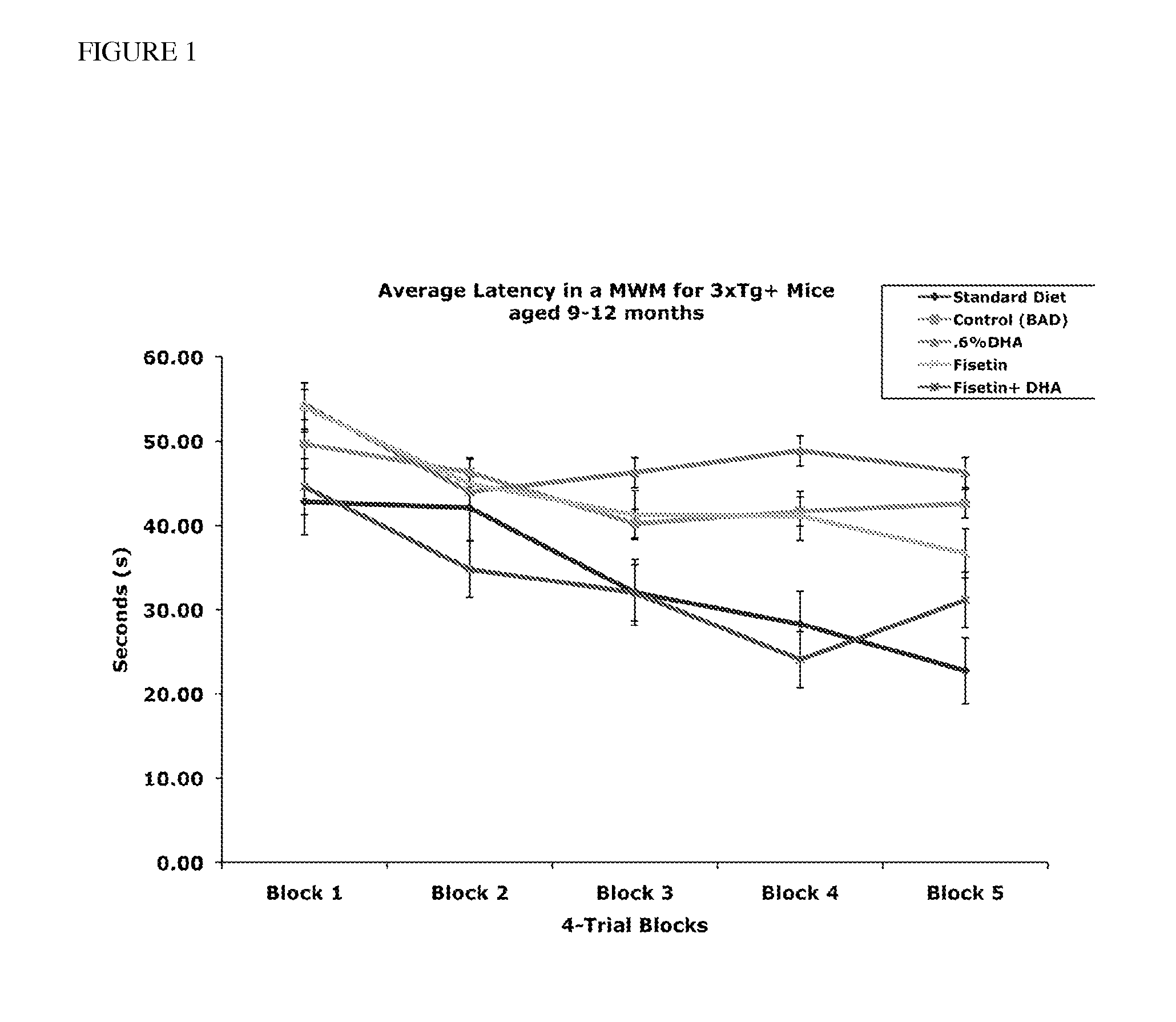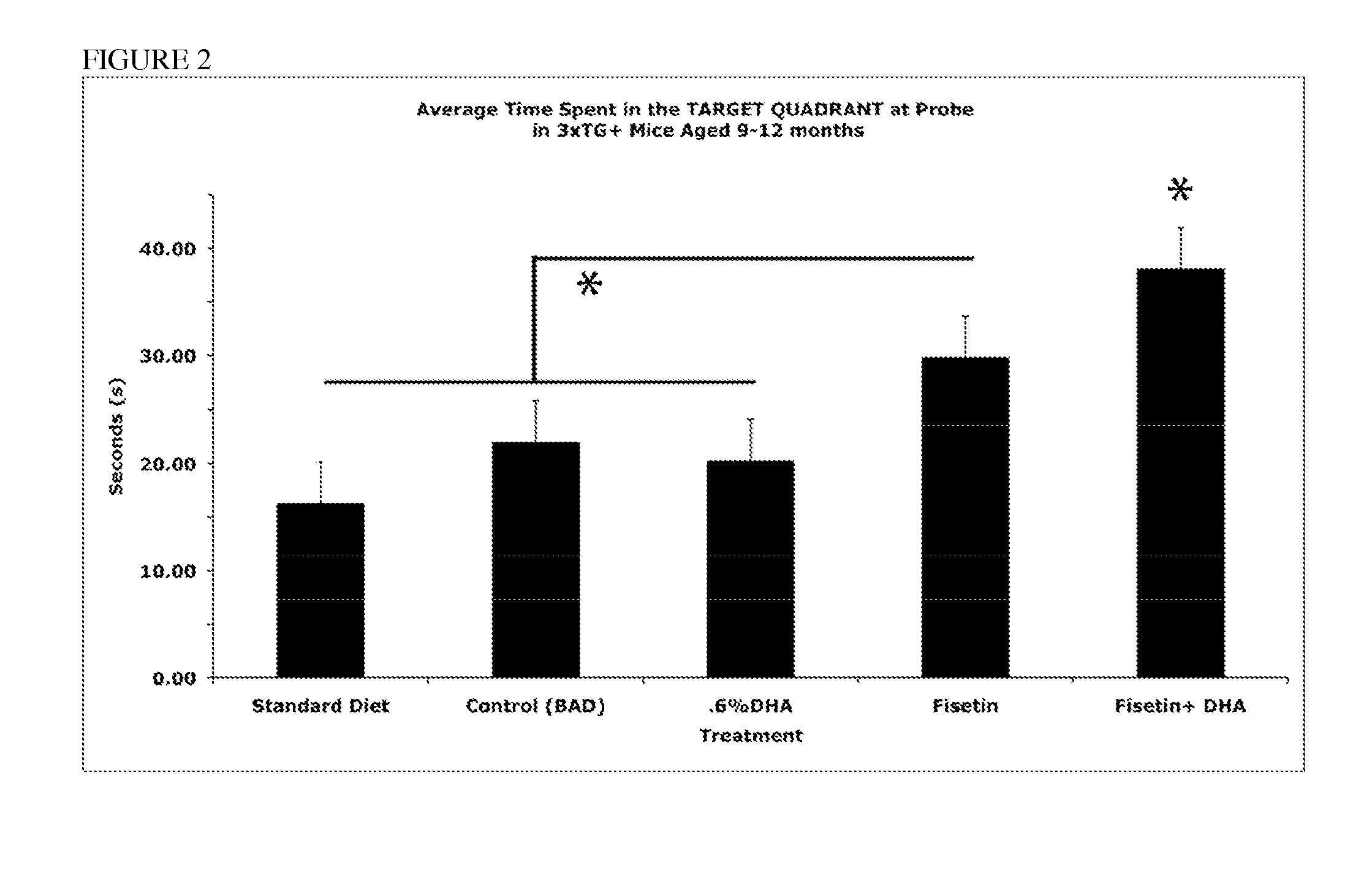Medical food for cognitive decline
a technology for cognitive decline and medical food, applied in food preparation, drug compositions, metabolic disorders, etc., can solve the problems of memory loss, dementia in elderly people, and inability to function as normal individuals, so as to slow down or treat cognitive decline, improve cognitive function
- Summary
- Abstract
- Description
- Claims
- Application Information
AI Technical Summary
Benefits of technology
Problems solved by technology
Method used
Image
Examples
examples
[0055]The fish oil enriched omega 3 fatty acid DHA has been reported to be ineffective in treating mild to moderate Alzheimer disease patients who have extensive beta amyloid plaques and tangles. It has been shown that DHA can reduce the accumulation of beta amyloid but DHA appears to lose efficacy over time as pathology develops in an animal model with both beta amyloid and tangles (tau pathology), the 3×AD transgenic mouse. We found that fish oil alone was insufficient to treat the 3×AD Tg mouse.
[0056]Fisetin, a natural flavonoid enriched in strawberries, is neuroprotective and can improve cognitive function in various animal models including aging mice and beta amyloid plaque accumulating transgenic mice. We have tested 0.6% DHA alone, 500 ppm fisetin alone and DHA+fisetin in combination delivered as a food supplement (in chow) to older 3×AD Tg mice with combined amyloid and tau pathology. The study ran from ˜9 months to 13-14 months of age. Cognitive deficits were improved by DH...
PUM
| Property | Measurement | Unit |
|---|---|---|
| time | aaaaa | aaaaa |
| weight | aaaaa | aaaaa |
| composition | aaaaa | aaaaa |
Abstract
Description
Claims
Application Information
 Login to View More
Login to View More - R&D
- Intellectual Property
- Life Sciences
- Materials
- Tech Scout
- Unparalleled Data Quality
- Higher Quality Content
- 60% Fewer Hallucinations
Browse by: Latest US Patents, China's latest patents, Technical Efficacy Thesaurus, Application Domain, Technology Topic, Popular Technical Reports.
© 2025 PatSnap. All rights reserved.Legal|Privacy policy|Modern Slavery Act Transparency Statement|Sitemap|About US| Contact US: help@patsnap.com



